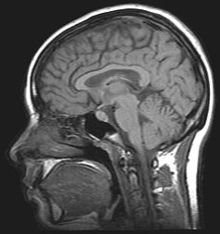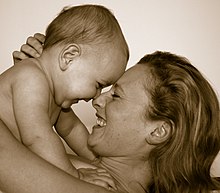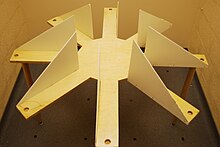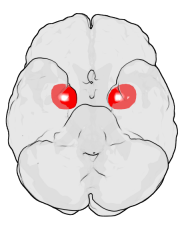Human subjects

It is usually desirable to study memory in humans because we have the ability to subjectively describe experiences, and have the intellect to perform complex and indirect tests of memory. Lesion studies allow us to reduce the neural mechanisms of memory, and results from finely constructed psychological tests can help us make inferences about how memory works. Neuropsychologists attempt to show that specific behavioural deficits are associated with specific sites of brain damage. The famous case of HM, a man who had both his medial temporal lobes removed resulting in profound amnesia, illustrates how brain damage can tell us a lot about the inner workings of memory. One of the fundamental problems with studying human patients who have already acquired brain damage is the lack of experimental control. [1] Comparisons usually have to be made between individuals; exact lesion location and individual differences cannot be controlled for.
Item list memory tasks
Ebbinghaus
Hermann Ebbinghaus began the scientific study of human memory with this treatise On Memory in 1885. [2] Ebbinghaus experimented on himself by testing his own ability to memorize lists of randomly arranged syllables presented at a regular pace of 2.5 syllables per second. He would record how long it took him to memorize a list of syllables and also how quickly he would lose the memorization. With this data, he traced learning and forgetting curves. Ebbinghaus also collected data on his ability to memorize at different times of the day and under different conditions. His work later influenced G.E. Müller who continued the tradition of lists of items to conduct memory experiments on human subjects and using behavioural data to develop models of memory. [3] The two most common types of memory studied using these methods are recognition and recall.
Recognition
Recognition memory is the ability to judge whether or not the cued item was previously presented on the list usually with a yes or no response. This memory is akin to the type of memory used for police line-ups. The particular task described used to be called "item recognition". Scientists study the rates of hits (correct "yes" responses) related to the rates of false alarms (incorrect "yes" responses) with statistical analysis to develop theories on how the recognition judgement is stored and retrieved. [4] These theories are then developed into memory models.
Recall
Recall memory is the ability to retrieve stored information either by being cued by a particular associated item or without an associated cue. The first is called cued recall and the second is called free recall. In cued recall the participant studies a list of paired items and then is presented one half of those pairs and must recall the associated other half. A common additional task is to have the participant learn a new set of associations with the cued items and study the amount of interference from prior association that occurs. These experiments help to develop theories on how we learn associations and what conditions affect that learning. [5] The free recall does not use item pairs. Instead, participants study a list of items and then recall that list in the order that they retrieve the items from memory. In these experiments the data is drawn from the order in which items are recalled and the inter-response times. This data is used to develop models of memory storage and retrieval.
Children
Humans are extremely dependent on memory for survival as we are dependent on our ability to identify and remember a wide range of material in order to learn and function, which is why the capability for memory is developed at a very young age. Memory in children is displayed in simpler ways than in adults due to lack of verbal communication and mental capabilities, and therefore the testing methods are similar but are modified to suit age specific abilities.
Observational and experimental methods are used to test children's memory by documenting either their physical actions, emotional (facial) response or attention/ focus, depending on the age (ability) of the child and the type of task provided. An older child can provide answers to both verbal and non-verbal tests to more complex tasks in a more detailed and accurate way and therefore produce more direct data. The change of methods according to age is necessary for several reasons particularly because memory ability expands at certain stages of childhood and can be influenced by biological advances and environmental experience.
From birth, children use observational (imitation) and auditory learning styles with increasing ability to remember complex sequences and concepts. The rapid growth in ability to retain information is partly due to the increase of myelin, which increases the speed of impulses between neurons, especially in the visual and auditory cortexes which become myelinated very early in the development processes. [6] The amount of myelination has a direct effect on the speed of information-processing and in turn the speed and strength at which we are able to remember things. Understanding of contexts and relationships, as well as memory strategies such as chunking and learning of schemas, can also influence the strength of memories and therefore must be considered when choosing a method of testing.
Action oriented memory
A well known study used to show early signs of recall memory, examines 3 month old infants behavior with mobiles. [7] The experiment entailed tying a string on a colourful mobile to the infant's foot, so that kicking would cause the mobile to move, pleasing the baby. After the initial training, it was shown that a week later the infants kicked in order to produce movement. Two weeks later the infant resumed the kicking behavior after a short reminder session where they watched the mobile moving (unattached to their foot). This experiment showed a recognition of the mobile, as well as recall (after one week), and cued recall (after 2 weeks). Recognition and recall are two essential aspects of memory; these are particularly useful in children since verbal reporting of memory may not be available yet or as reliable when testing very young participants. At the age of approximately 9 months some infants are able to reproduce some simple actions they observe up to 24 hours after witnessing them. [8] The reproduction of behaviors such as choosing one object over another or repeatedly placing an object in a certain spot is a type of situational memory test used to identify the child's level of memory capability. Deferred imitation, the ability to reproduce behaviour without cuing, can be seen and tested near the age of 18– 24 months. Children become able to replicate more complex events with greater detail, from memory. [9]
Jean Piaget, a child development psychologist, conducted a study testing the cognitive and memory abilities of children around 2 years of age. These tests were conducted using objects presented to the child followed by their removal from sight. This causes very young infants to believe the object no longer exists. At approximately 8–12 months, children will look for the missing object and this display shows memory, as well as a comprehension that it still exists when it is not directly seen. This led to the theory of object permanence which demonstrates the stage at which memory and cognitive development have reached the level of mental representation. [10]
Facial recognition

A child as early as 7 days old can shows signs of facial expression imitation such as tongue or lip protrusion and opening of their mouth. [11] There is some debate as to whether this is a voluntary or reflexive action though the ability to imitate demonstrates the infants ability to encode the image and imitate it. Evidence of facial memory over longer delays can be seen in children as early as 2–3 weeks old. Changes in behavior such as crying less and smiling more shows evidence for recognition of a familiar face.
Recognition can also be shown with habituation, the process of attending a familiar stimuli less in preference for a new one. This can be seen as early as 5 months of age in several forms including auditory and visual identification. In a study of 8-10 month infants, both familiar objects/faces and newly presented ones were introduced at different intervals and time delays. Looking time and first looks were recorded, and the results indicated habituation and memory recall. [12]
False memories
Accuracy of memory is an important factor when studying memory in children as it has been demonstrated that children's memory more susceptible to suggesting and implanting of false memories than adults. In a study on preschoolers, using a questionnaire method in a yes/no and multiple choice format, the result of forcing an answer in response to a controlled situation differed according to question style. [13] The children showed a preference to saying ‘yes’ to ‘no’ and showed an equal preference for the multiple choice (when neither were correct), neither are an ideal test for memory accuracy in children. The Criterion-Based Content Analysis (CBCA) [14] is designed to decipher truthful from false memories in children and is a part of the Statement Validity Analysis (SVA) which consists of structured interviews, systematic analysis of verbal statements and statement validity checklist. This is a comprehensive protocol that tests the reliability of a child witness's memory of an event or situation which relies on the assumption that false memories are of weaker quality then truthful and accurate memories.
Recognition memory in a legal setting is also different in children than in adults. In a meta-analysis study a line-up style test was used for a child witness to identify a culprit among other suspects. [15] The results show that children over the age of 5 were able to identify a culprit (when the culprit was present) at a comparable rate to adults but children up to age 14 produced far greater number of false identifications when the culprit was not present. It was speculated by Pozzulo & Lindsay [16] that false positives were caused by an inability to produce correct absolute judgments (recall) while relative judgments (recognition) are more successful.
Technologies

Cognitive neuroscience aims to reduce cognition to its neural basis using new technologies such as fMRI, repetitive transcranial magnetic stimulation (rTMS) and Magnetoencephalography (MEG) as well as older methods such as Positron emission tomography (PET) and Electroencephalography (EEG) studies. Due to the correlational designs used in fMRI, many scientists have coined this up and coming field as the new phrenology in the sense that techniques such as fMRI rely heavily on complex statistics. [17] Type 1 errors can lead scientists to draw premature and incorrect causal relationships if improper designs are used. [18]
Ethics
Human subject research must be carefully designed as to not have any adverse effects on the subject, and not impose on their rights as a human being. Neurological procedures that intentionally lesion the brain are illegal, and therefore those who have already obtained brain damage must be studied. The study of brain damaged patients has its drawbacks, however case studies of brain injured patients has greatly improved our understanding of the neural basis of memory.
All subjects (or their legal representative) must have a clear understanding of the experimental procedure, including any potential dangers to themself, and be in a right state of mind to express consent to the researcher before any tests can be started.
The American Psychological Association uses a strict ethical code concerning research in psychology.
Experimental designs
A major complication that is raised in memory research is its fallible nature in humans. Having the ability to recall memories does not necessarily mean they are accurate. Our ability to store and process what is going on around us relies on memory being a constructive, fallible process. The technologies explained above may show areas of activation associated with certain behaviors, but without any idea of lesion location, it is difficult to pinpoint exactly what part of the brain relates to which behavioral deficits observed. Neuropsychologists have created various tasks designed to assess specific types of memory so that inferences about lesion location can be drawn from poor performances on these tests. Neuropsychological tests can aid us in understanding specific types of memory associated with specific sites of brain damage.
Corsi block tapping
An assessment of visual-spatial memory involves mimicking a researcher as he/she taps nine identical spatially separated blocks. The sequence starts out simple, usually using two blocks, but becomes more complex until the subject's performance suffers. This number is known as the Corsi Span, and averages about 5 for normal human subjects. An fMRI study involving subjects undergoing this test revealed that while the sequence length increases, general brain activity remains the same. [19] So while humans may show encoding difficulty, this is not related to overall brain activation. Whether able to perform the task well or not the ventrolateral prefrontal cortex is highly involved. Corsi blocks tasks with a normal forward order requires support from the visuospatial sketch pad, but not from the phonological loop. When the sequence to be recalled becomes longer than three or four items, central executive resources are used [20]













